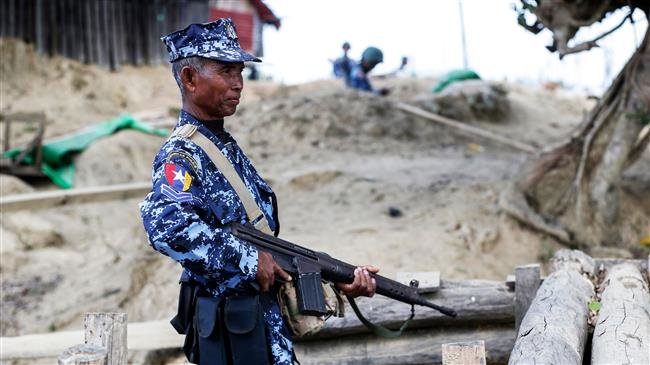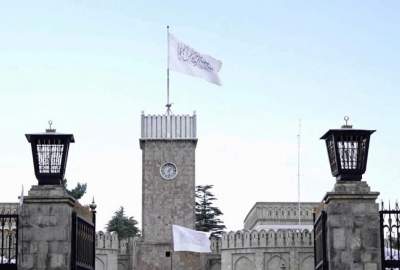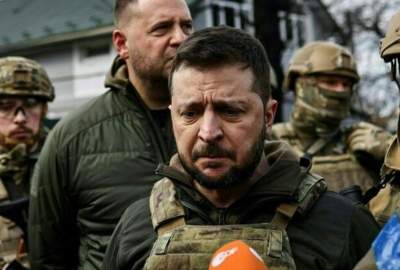Restoring Afghanistan’s Buddhist artifacts that were destroyed by the Taliban 18 years ago is like working on a 1,500-year-old jigsaw puzzle, say conservators working on the latest restoration project. The militant Islamic group in 2001 destroyed artifacts dating from the third century when many Afghans practised Buddhism, including two towering Buddha statues in Bamyan province and scores of smaller ones excavated from monasteries and preserved at the national museum in Kabul.
Publish dateMonday 14 October 2019 - 20:53
Story Code : 193121
After the Taliban regime fell that same year, the museum began restoring remnants of the country’s Buddhist history. The latest U.S.-supported project aims to reassemble thousands of pieces into statues within the next three years.
“It is very important (work) because it is actually restoration of our heritage, our identity, our past,” said Mohammad Fahim Rahimi, director of the 100-year-old National Museum of Afghanistan.
“Buddhism was practised here for more than 1,000 years. That’s a very large part of our history,” he added.
Forty years of war, from the 1980s Soviet occupation to internal fighting and the war against the Taliban, have destroyed much of Afghanistan’s art, artifacts and architecture.
Warlords stole other pieces and sold them abroad.
Conservator Sherazuddin Saifi, 62, was working in the museum under the Taliban in 2001.
“These antiquities are the national treasure and the history of our country and show who lived in this country,” he added.
In a classroom at the museum, Afghan conservators work alongside experts from the University of Chicago’s Oriental Institute. U.S. assistance is invaluable because Afghan conservators lack experience and the necessary chemicals and glues for restoration work, Rahimi said.
Sometimes they can work from archived photos that show the statues intact. In other cases, 3-D imaging and imagination are required to sort and reassemble stucco shards of Buddha faces, hands and torsos.
A spokesman for the Taliban, which was until last month in peace talks with the United States, said the group has no plans to destroy antiquities.
“All antique artifacts will be preserved in their place,” spokesman Suhail Shaheen told Reuters. “They should be preserved for the history and culture education of the upcoming generations.”
U.S. President Donald Trump told a rally on Thursday American soldiers have been in Afghanistan long enough, but talks with the Taliban on withdrawing U.S. troops, intended as a step toward peace, broke down in September.
The prospect of reintegrating the Taliban in a power-sharing deal troubles Rahimi, who is looking at options for moving the artifacts if they are threatened again.
“We cannot let that happen again to our heritage,” he said.
“It is very important (work) because it is actually restoration of our heritage, our identity, our past,” said Mohammad Fahim Rahimi, director of the 100-year-old National Museum of Afghanistan.
“Buddhism was practised here for more than 1,000 years. That’s a very large part of our history,” he added.
Forty years of war, from the 1980s Soviet occupation to internal fighting and the war against the Taliban, have destroyed much of Afghanistan’s art, artifacts and architecture.
Warlords stole other pieces and sold them abroad.
Conservator Sherazuddin Saifi, 62, was working in the museum under the Taliban in 2001.
“These antiquities are the national treasure and the history of our country and show who lived in this country,” he added.
In a classroom at the museum, Afghan conservators work alongside experts from the University of Chicago’s Oriental Institute. U.S. assistance is invaluable because Afghan conservators lack experience and the necessary chemicals and glues for restoration work, Rahimi said.
Sometimes they can work from archived photos that show the statues intact. In other cases, 3-D imaging and imagination are required to sort and reassemble stucco shards of Buddha faces, hands and torsos.
A spokesman for the Taliban, which was until last month in peace talks with the United States, said the group has no plans to destroy antiquities.
“All antique artifacts will be preserved in their place,” spokesman Suhail Shaheen told Reuters. “They should be preserved for the history and culture education of the upcoming generations.”
U.S. President Donald Trump told a rally on Thursday American soldiers have been in Afghanistan long enough, but talks with the Taliban on withdrawing U.S. troops, intended as a step toward peace, broke down in September.
The prospect of reintegrating the Taliban in a power-sharing deal troubles Rahimi, who is looking at options for moving the artifacts if they are threatened again.
“We cannot let that happen again to our heritage,” he said.
avapress.com/vdcgxw9qqak9yq4.5jra.html
Tags
Top hits











